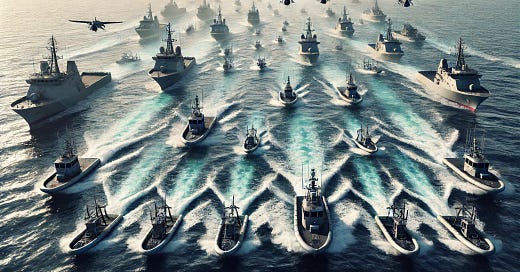Rebooting Seapower: Investing in Attritable Vessels to Win Tomorrow’s Maritime Conflicts
Defense and Dual-Use Technology
Good morning!
For nearly a century, the aircraft carrier has been synonymous with naval supremacy, a symbol of power projection that defined maritime strategy. Yet, as the character of warfare evolves, clinging to legacy platforms may no longer be a winning strategy.
The future of naval dominance lies not in monolithic carrier strike groups, but in small, distributed, disaggregated, and autonomous—or at least minimally manned—platforms. This transition isn't merely a tactical preference; it's an essential strategic adaptation to the realities of modern conflict.
Today's battlespaces are increasingly transparent, driven by sophisticated Command, Control, Communications, Computers, Cyber, Intelligence, Surveillance, Reconnaissance, and Targeting (C5ISRT) networks. The large, highly visible, and crew-intensive nature of carriers and large surface combatant ships makes them exceptionally vulnerable. Smaller, more agile vessels augmented by autonomous platforms, however, significantly complic…
Keep reading with a 7-day free trial
Subscribe to Building Our Future to keep reading this post and get 7 days of free access to the full post archives.


